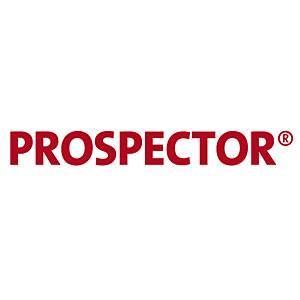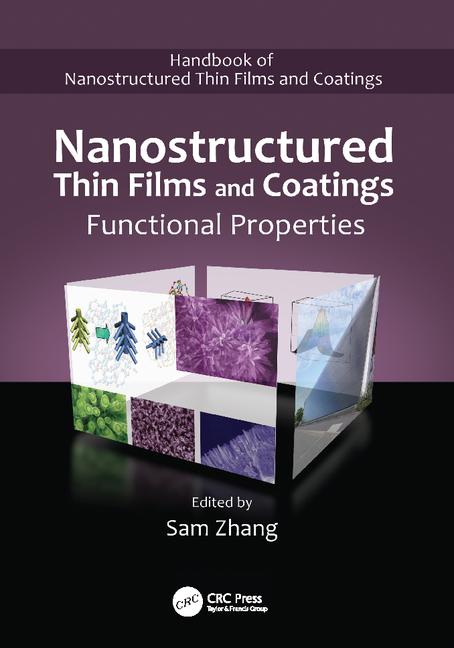Author’s Note: This article originally appeared as two separate articles on the Prospector® website, http://knowledge.ulprospector.com/.
Having had to punch cards at a computer lab to run simple computer programs in college, I truly appreciate both the personal computer and the internet. But it amazes me that many of those born into the generation of unlimited information don’t utilize the tools available to them.
The advice here is for the coatings industry, but most facets are applicable to other industries. Even as young as college-age, if you’ve decided on a profession, there are many ways to jumpstart your career and leverage the tools available to you.
LinkedIn is an excellent professional social media site for:
- Networking with others in your field;
- Finding a mentor or coach for your career;
- Learning from those with experience by joining groups;
- Finding job opportunities by following companies;
- Getting noticed by recruiters.
You can ask questions and join groups that are ancillary to your industry. If coatings (paint) is your focus, markets utilizing similar materials to paints include household, industrial and institutional cleaners (HI&I), personal care, adhesives, sealants and construction products, etc. Over the years, companies have learned to develop products for multiple markets, but sometimes you can still find a technological gem that you can leverage from another industry into your own. This could mean an application patent and peer recognition.
Other Helpful Tools and Resources
SciFinder is a more powerful tool, but ChemSpider is significantly less expensive (free) and very handy. Use it to find chemical structures, EH&S data, CAS and suppliers, for example.
FreshPatents.com is an excellent method to track market developments as well as competitive activities. You choose the keywords to monitor. These could be a company’s name, a technology (such as solar, biopolymers, corrosion), an institution or name. You receive an alert for patent applications with those keywords.
FreePatentsOnline.com is a much more versatile and complete site vs. using the USPTO, since you can also search nonpatent literature and patents filed other than in the United States. Derwent World Patents Index is a great site, but comes with a price that the other two do not have.
Literature
Available digitally, journals may be the best way to learn and develop your expertise. Most journals contain a section on trade shows and conferences, so you can plan ahead for budgeting these with your manager. They also often highlight a specific aspect of your industry – raw materials such as resins, additives, pigments, or the annual “Top #” paint companies by sales and volume. You can monitor people movement, company name changes and a host of other activities, besides many outstanding peer-reviewed technical papers.
These are my favorite journals, but there are many, many more. And if you are in a specific market (such as Oil & Gas), there are periodicals for them as well:
· Paint and Coatings Industry (PCI)
· Coatings Tech
· Coatings World
· European Coatings Journal
· Adhesives & Sealants Industry
· Household and Personal Products Industry (HAPPI)
Conferences and Trade Shows
Conferences and trade shows are good places to both learn and network. The American Coatings Show takes place in the U.S. every other year (next is 2018 in Indianapolis), and holds an exhibition in Europe in the odd years. There are also many technical symposia with varied value as far as their content and the cost to attend. Most local coatings societies (example: Cleveland Coatings Society) provide a technical dinner program during the fall and winter, typically on a monthly basis with just one speaker. In the spring, there may be an “outing,” which is more social, but may provide some technical content. These meetings offer both learning opportunities and the chance to network with others in your geographical location, which could be useful for a job change but is best for getting known.
If you have a technical sales role with your company, you can get on the local society’s schedule for a dinner meeting and work in customer calls around that dinner. Similarly, as an attendee, many topics are presented at multiple society meetings or spring “conferences,” so you need attend only one to hear the content once.
Four Steps to Fast-Track Your Growth
1. Find a Mentor
As I mentioned, it may be possible to find a mentor through LinkedIn but finding one within your own organization is also recommended. In most cases, a mentor is not your supervisor but someone with whom you can be open and honest. Not that you can’t trust your supervisor, but you typically don’t want to share some things with the person who provides your performance review.
You have to decide what you want to accomplish with a mentor, too. It may be coaching for a specific area where you need improvement. An example would be interpersonal skills of sales communication. Human resource departments offer development courses, and a mentor can help suggest what may be best for you. A mentor may be the person that helps you to network within your organization or who provides connections externally. A mentor shouldn’t be viewed as a permanent fixture, and, as needs change, so can the need for a different mentor. There are good books on coaching and mentoring; I like Coaching and Mentoring for Dummies as a general resource.
2. Think Globally
Another consideration is culture. Being American, I admit that I can be American-centric. But the world is global, and most all global organizations have employees from many countries working at a site. Understanding, respecting and acknowledging cultural differences goes a long way in fostering relationships and the development of strong teams. Again, there are numerous books on the subject, but I like Dresser’s Multicultural Manners. Along those same lines, if you communicate remotely by e-mail, keep your sentences short and avoid idioms.
3. Utilize Training and Assessment Tests
If you are in an organization that requires or voluntarily offers training courses, it is advisable to look at these and decide what is appropriate for your career. You will usually be advised of suggested courses during the follow-up of your performance review to discuss your career development.
I highly recommend that you take several assessments early on to determine traits you may not be aware you have. Although viewed as “soft science” or “fuzzy,” taken collectively, these provide a good picture of yourself. The first is Myers-Briggs, which is a questionnaire designed to measure psychological preferences in how people perceive the world and make decisions. This is also accessible on-line in case your organization does not offer it.
The second is one of an assessments for social style. From this you get a read on your level of assertiveness, communication style, etc.
The third is an evaluation addressing Kirton Adaptation-Innovation Inventory (KAI). It is a very useful tool to understand the factors that cause stress in an individual, as well as an organization. It is a way to help manage change, such as in mergers and acquisitions, as well as for diversity. We’ve all heard of “thinking outside the box.” But what is this box? I think of the box as a toolbox of the known available tools to a person, team or organization. Some people are happy with the tools they have. Others look for ways to use the tools for new functions and still others like to create new tools for old or new applications.
It takes all types of people to have a successful team and an efficient organization. It seems intuitive that people would want to understand as much about themselves as possible and find ways to work effectively with people with other personalities and styles.
For example, with Myers-Briggs, I test as an introvert. Most anyone who knows me feels that this is incorrect and that I’m an extrovert. But my social style is “expressive-expressive,” which explains the appearance that I am an extrovert. I’m also a risk-taker, who only wants to know where the box is to avoid being in it at all. I much prefer to improvise and create. Until I understood this about myself, I really had a problem with detail-oriented, introverted and nonexpressive people. I have come to learn the value of diversity – not just from the perspective of culture, but also how a person thinks, feels, innovates, adapts and communicates, among others.
4. Use the Right Tools at the Right Time
There are other tools I use from time-to-time. I encourage people to learn how to use all the tools in a tool box, but to only actually use the ones that you need for a project or exercise. An example is SixSigma. I am certified and have also been trained for Design for SixSigma. I learned all of the tools, but find I rely on certain ones heavily, while ignoring others. Does that make me a bad practitioner? I don’t think so. I just use what I need to get the job done.
The same can be said for leadership tools. These, again, are available through HR at most companies. If you feel you may want to manage projects, a group or an organization, you have to start with the right tools. There are many things you will be taught, but the most important things to remember are what you learned from the “soft skills” toolbox.
The most important additional tools to add to that box are ones that address organizational change (such as mergers, acquisitions or sale of business) and the management of disruptive employees. In the former, you will learn that most people abhor change; or at least the transition to change, since it involves uncertainty. This affects most everyone in an organization, and it is most important to recognize how different people react to the same circumstances. In the latter, you will most likely have to interact in some way with a highly-productive individual who is disruptive and may be toxic to the team or organization. In both cases, this is where your HR partner or mentor can help coach and guide you.
* The use of website names, journals, institutions, etc. does indicate a personal preference based on my experience, but in no way am I associated with anything recommended through employment or any other form or remuneration.
About Proespector®
Prospector® is a specialized material and ingredient search engine for product developers offered by UL, the world leader in product safety. The Prospector® Knowledge Center publishes articles on materials, processes, technical challenges and more from top industry experts. . For more information, visit https://www.ulprospector.com.







Report Abusive Comment